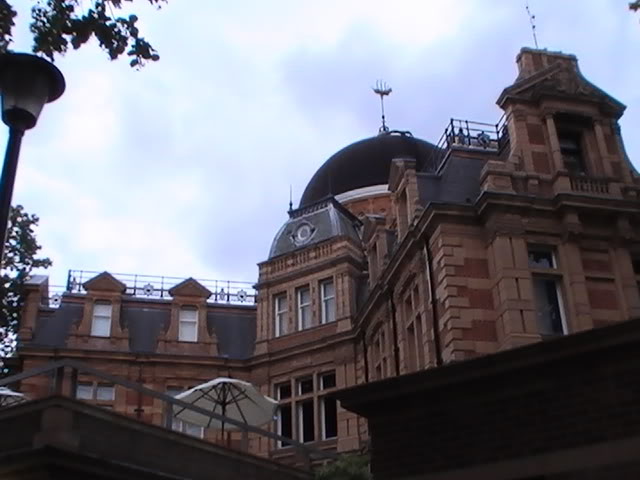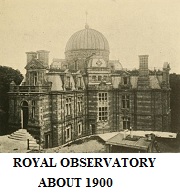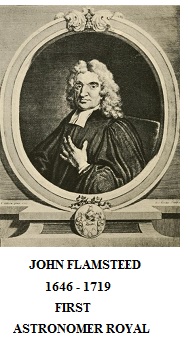|
London Sights to See
Royal Observatory, Greenwich
|
 |
To most of us today, the simple question "What time is it?" is a commonplace occurrence. For the men and women whom, over the centuries since 1675, have worked at the Royal Observatory, Greenwich, however, it has been, and still is, a question of huge importance.
 Evolving from an era when, in 1386 at the Salisbury Cathedral Evolving from an era when, in 1386 at the Salisbury Cathedral , the time was measured in quarters of an hour indicated by the gong of a
bell, the atomic clocks of today are precise to one second in a million
years. Fortunately for visitors to Greenwich, approximately 23 minutes east of Big Ben in London, dozens of artifacts from everything in between those extremes has been preserved. , the time was measured in quarters of an hour indicated by the gong of a
bell, the atomic clocks of today are precise to one second in a million
years. Fortunately for visitors to Greenwich, approximately 23 minutes east of Big Ben in London, dozens of artifacts from everything in between those extremes has been preserved.
For much of the 20th century, however, the organization wasn't actually
housed at Greenwich. Owing to increasing urbanization, the observatory
and staff were moved in in the 1920s, having to find various homes over
the years. Sites as close as Cambridge
and as far away as Herstmonceaux
in Sussex have been used.
During that time the original buildings became part of the National Maritime Museum.
That's fitting given that the observatory was originally funded as a
means to aid
navigation, with considerable commercial impact to Britain
and the world.
Over the centuries, the need for accurate navigation was felt by many.
By the 18th century, the technology to fulfill it was rapidly evolving.
In 1714 a Board of
Longitude was established to address the problem.
After much scientific trial and political intrigue, the
£20,000 reward was finally claimed. The money went, after 50 years of effort,
not to an established astronomer but to an obscure Yorkshire carpenter
and amateur clockmaker, John Harrison.
Wisely, the prime
meridian - longitude zero degrees - was kept in place during the observatory's
wanderings. It needn't have been so. During the late 19th century there
was considerable debate about where to place the reference line. In
1884, the International
Meridian Conference was convened to decide the question.
Paris,
long home to astronomical and geodetic study, was a logical choice it seemed but was
outvoted, 22 to 1. The US had already selected Greenwich and much
sea-going commerce already depended on charts using the site as a
standard.
Greenwich has been the official site ever since.
Today, visitors can see several interesting results of the efforts to
establish accurate timekeeping. All four of his innovative inventions
are preserved and kept in working order at the Harrison Gallery.
But there are many other interesting items on display, inside and out.
 The Red Time ball has for decades slid up and down a pole atop Flamsteed House in
order to mark the time. John
Flamsteed The Red Time ball has for decades slid up and down a pole atop Flamsteed House in
order to mark the time. John
Flamsteed was the first Astronomer Royal. Visible on a good day for miles it has been used to synchronize clocks
and provide amusement for millions. was the first Astronomer Royal. Visible on a good day for miles it has been used to synchronize clocks
and provide amusement for millions.
A more modern timepiece is ensconced in one wall: a digital read-out
kept accurate by connection to 200 atomic clocks around the world. You
can quite comfortably, as the saying goes, set your watch by it.
Among other interesting artifacts on display are many of the
observatory's 360 telescopes, dating from the mid-17th century.
Everything from fashion accessories to gun-sighting telescopes
used in WWI are housed here.
Naturally, while here, you will want to stand on both sides of the
Prime Meridian and take a photo. There aren't many opportunities, after
all, to be in two times at the same place.
The site is easily reached via the London
Underground, i.e. the 'tube' or subway. Exit at
North Greenwich.
|

